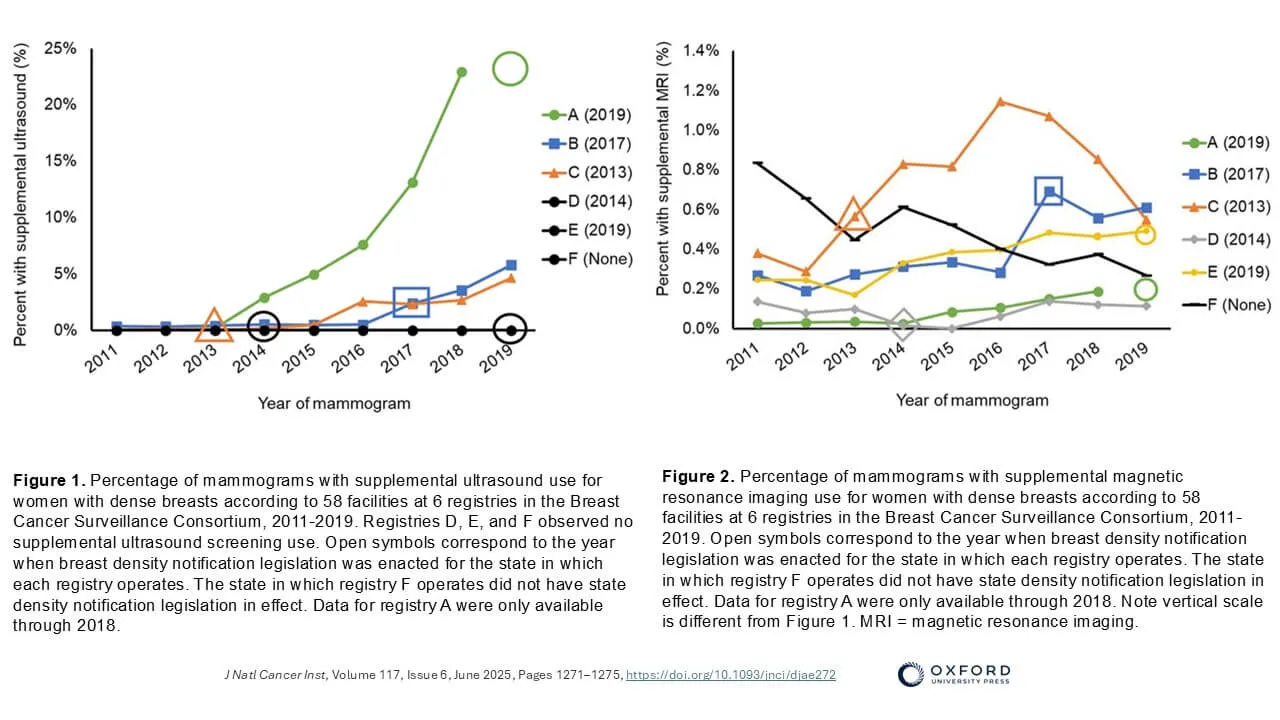Researchers from the Breast Cancer Surveillance Consortium (BCSC), including Brian Sprague from the University of Vermont's Larner College of Medicine, analyzed data from nearly 500,000 women aged 40-74 across six U.S. regions, found that more than 96% of women with dense breasts did not receive supplemental screening following a negative mammogram.
Dense breast tissue is present in about half of women undergoing mammography and can obscure cancer detection. It is also associated with more advanced diagnoses. Supplemental imaging such as ultrasound or MRI can improve detection but also increases false positives. Despite this, there are no national guidelines recommending supplemental screening for most women with dense breasts, except those at very high risk.
The study examined over 1.17 million mammograms performed between 2011 and 2019 and found that only 2.8% of mammograms were followed by ultrasound, and 0.3% by MRI. On-site availability of ultrasound significantly increased its use (OR = 4.35), while MRI availability had no effect. Facilities with academic affiliations or for-profit status were less likely to offer ultrasound but more likely to offer MRI. State breast density notification laws were associated with increased supplemental screening, but the absolute rise in usage was small.
The findings suggest that facility-level factors, such as imaging availability and institutional policies, play a major role in determining whether women receive additional screening. Moreover, the impact of state-level legislation, while statistically significant, did not lead to widespread adoption of supplemental imaging.
Researchers caution that the federal breast density notification law, enacted in September 2024, may have limited impact unless paired with clear clinical guidelines, insurance coverage, and supportive infrastructure. They also note that MRI use may be influenced by higher costs, contrast dye requirements, and patient risk profiles, making it less accessible than ultrasound.
This study, one of the largest of its kind, underscores the need for evidence-based national recommendations and equitable access to supplemental imaging. Without coordinated efforts across clinical, policy, and insurance domains, many women with dense breasts may continue to miss out on potentially life-saving imaging.
You can access the full article at the Journal of the National Cancer Institute.
